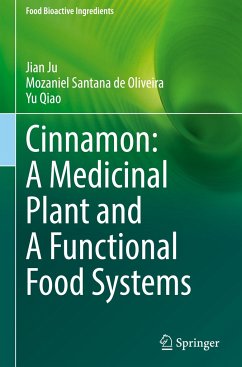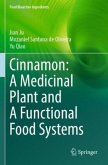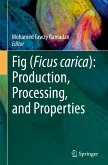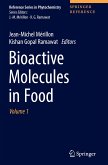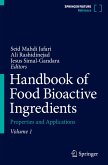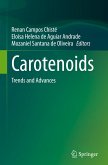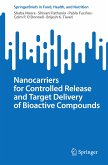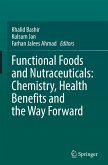This work addresses the multiple possibilities for using cinnamon for applications in food science technology and to help in the complimentary treatment and prevention of diseases, with priority given to secondary metabolites produced by this plant. Issues related to the functions of cinnamon and its applications, as well as the biosynthetic pathways of production by plants, are covered in depth. The link between food science and technology and specific medicinal plants has not been explored enough in the current literature, and this text looks to bridge this gap in its extensive coverage of cinnamon.
CINNAMON: A Functional Food and Medicinal Plant provides readers with a broad and diverse overview of the importance of secondary metabolites produced by plants and the possibilities for innovative biotechnological approaches that introduce new potential to a wide range of industrial products. The application of cinnamon in productsacross food science and its numerous health benefits are outlined, including its use as a complimentary medicine for a number of diseases. This book features the main cinnamon varieties and production areas plus quality evaluation and bioactive compound extraction methods. The multiple applications of spices in foods are covered in depth, plus antioxidant activity and inhibitory effects on bacteria and fungi. Beyond its use in foods, readers will find chapters covering the antiviral effects of cinnamon and its use for the treatment and prevention of diabetes and other disorders. Also important is coverage on the safety aspects of cinnamon and its extracts.
To date no book has exclusively covered the many uses of cinnamon and cinnamon extracts in food and pharmaceutical applications. This much-needed work provides a fully up to date and extensive overview for researchers to examine the many uses of cinnamon across multiple products and industries.
CINNAMON: A Functional Food and Medicinal Plant provides readers with a broad and diverse overview of the importance of secondary metabolites produced by plants and the possibilities for innovative biotechnological approaches that introduce new potential to a wide range of industrial products. The application of cinnamon in productsacross food science and its numerous health benefits are outlined, including its use as a complimentary medicine for a number of diseases. This book features the main cinnamon varieties and production areas plus quality evaluation and bioactive compound extraction methods. The multiple applications of spices in foods are covered in depth, plus antioxidant activity and inhibitory effects on bacteria and fungi. Beyond its use in foods, readers will find chapters covering the antiviral effects of cinnamon and its use for the treatment and prevention of diabetes and other disorders. Also important is coverage on the safety aspects of cinnamon and its extracts.
To date no book has exclusively covered the many uses of cinnamon and cinnamon extracts in food and pharmaceutical applications. This much-needed work provides a fully up to date and extensive overview for researchers to examine the many uses of cinnamon across multiple products and industries.

